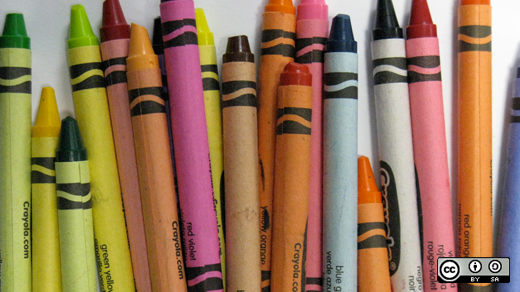One of the fun parts of blogging for PCWorld.com is getting reader response e-mails from all over the world. You never know who is going to read what you write. Sometimes they'll spot the blog post on the PCWorld Web page, or as a link in a tweet or even as a Google search result several months after the blog post was published.
I've blogged previously about Inkscape, the free vector drawing program for Linux, Macintosh, and Windows, so I was thrilled to receive an e-mail from Sheena Vaidyanathan, who teaches Inkscape to elementary school students in Los Altos, California, in the heart of Silicon Valley. Here is how Sheena explained her teaching to me:
"I started adding Inkscape as an art unit, then as an after school program and it was so popular, that the school district asked me to start a program called Digital Design for all 7 elementary schools. I teach 20 classes each week to 4th-6th graders, and each class is an average of 25 students. After one trimester, I get a new set of students, so in one year I teach all 4-6th graders, about 1500 students! It is a lot of work, but I love teaching and sharing my enthusiasm for art and technology with kids. I love using Inkscape and other free open source software (I also teach SketchUp, and Scratch) because the kids can actually install it at home and use it outside the classroom. I am not sure if there are any other public schools that have a program like this, but it is a fantastic way to get kids excited about technology, and learn to use computers to express their creativity."
Sheena's e-mail described a scenario that is the dream of every educator: unleashing all kinds of learning via creativity and the arts. I asked Sheena if she might write up a more detailed explanation of what she does, and she kindly obliged in assembling this blog post– which includes links to her students' Inkscape drawings.
The icing on the cake in this story is the next e-mail I received from Sheena. One of her sixth-grade students, Max Jarrel, told his parents that what he really wanted for Christmas was Inkscape. Here is how one of his parents describes it: "My son, Max, was fascinated with Inkscape and said that was what he wanted for Christmas. Then I found out it was an easy, free download :) He played with it continually over the break." I can visualize Max dabbling in Inkscape, trying each day to create more and more interesting art.
I'm one of those who believe that college doesn't start after you finish high school. College starts in middle school years when you start to become aware of your natural talents and interests. High school helps develop those talents and interests. College is the finishing school. Students don't often develop new interests after they leave high school. It's great when they do, but that is the exception rather than the rule.
So what Sheena Vaidyanathan and the Los Altos School District are doing is opening doorways of design opportunities to large numbers of students. In combination with the trainings she teaches in Google SketchUp and MIT's Scratch programming language, these students are gaining a very solid foundation in a range of digital competences that will stand them in excellent stead in whatever careers they might choose to pursue. All of the above-mentioned software is free, which means that this school district is also promoting digital inclusion.
When I first read Daniel Pink's bestselling book, A Whole New Mind, I pictured what a school of the future would look like with students busily engaged in creative exploits under the gentle guidance of a wise and caring teacher. Sheena Vaidyanathan and her students are living proof that the future is now. Creativity and innovation thinker Teresa Amabile saw this all so clearly 20 years ago in her book Growing Up Creative: Nurturing a Lifetime of Creativity. Students and teachers everywhere owe a debt to Daniel Pink and Teresa Amabile. Their thoughts – and the thoughts of others like them – have moved us so much further ahead in devising a more humane and enriching form of education for our children.
This blog post would not be complete without mentioning the incredible devotion and talent of the volunteer programmers who create Inkscape. I'm especially impressed with Jon A. Cruz, who is not only an artist and Inkscape programmer; he also spends time on Twitter patiently responding to people's queries about Inkscape. To my mind, Jon Cruz resembles a farmer who owns his own restaurant. He not only grows the food and cooks it; he then delivers it to your table and asks you whether you're enjoying it. Such is the spirit of the free and open source software (FOSS) movement. If you haven't tasted it yet, sit yourself down. You're in for a treat.
Incidentally, you can meet and chat with Jon Cruz in person at the upcoming Southern California Linux Conference (also called SCALE 9x) in Los Angeles, taking place at the end of February, 2011. He'll be there as one of the people at the Inkscape table. Here is a short video of Jon Cruz talking about Inkscape in Australia earlier this month. If you attend the SCALE 9x conference, stop by to say hi to Jonathan Thomas, the immensely talented programmer of OpenShot, the excellent free video editor for Linux. Guess what OpenShot uses for advanced video titles? You guessed it: Inkscape.






Comments are closed.